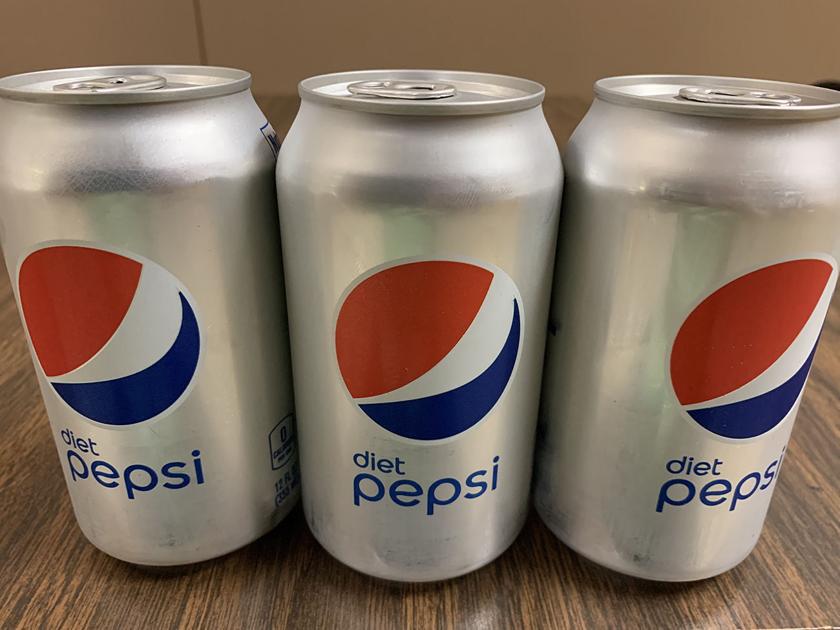
As diabetics, health-conscious folks and diet soda aficionados have noticed, the stock of sugar-free soft drinks is depleted on most store shelves.
What gives? It appears the problem is threefold. Coca-Cola has said on its official Twitter feed that soda makers are seeing greater demand for canned and bottled beverages as more people stay home to fight the coronavirus. The world’s top soft drink company has also said that the virus has disrupted its supply chain for artificial sweetener and “certain other ingredients” that are shipped in from China.
Of course, the shortage isn’t limited to Coke products. The Sentinel’s editorial staff are connoisseurs of cherry Diet Pepsi. It’s the fuel that powers us through the daily 3 p.m. slump. You know the one when lunch has passed but hours remain in the work day. We haven’t been able to stock it in the office fridge for weeks now, and even un-flavored diet sodas are hard to come by.
Beverage makers — beer brewers included — have also said there’s an an aluminum can shortage. The top aluminum producers in the world are Australia, China and Guinea, all of which are experiencing shipping delays because of the coronavirus. But we don’t have to rely on foreign bauxite for our aluminum. You can pitch in and do your part by recycling cans once you drink through your stockpile of delicious canned beverages. Aluminum is infinitely recyclable and accepted by all metal recycling businesses. It should never end up in the landfill.
———
Last week, public radio’s top team of science reporters put together a fantastic portrait of the lingering effects of the 1918 flu epidemic.
Radiolab’s July 17 episode “Dispatches from 1918” is a must-listen for anyone interested in what the world might look like on the other side of the coronavirus pandemic.
While I was intrigued by the historical repercussions influenza had on art, entertainment, politics, news and a renewed interested in spiritualism what I found most fractionating was what happened to the flu virus itself.
Spoiler alert: The so-called Spanish Flu is still alive and well at making people sick.
Because of the way influenza is structured on a molecular level, the virus is able to mutate and mix and mingle with viruses. So the most prevalent forms of flu today are direct descendants of the 1918 flu. That means every flu death over the past 100 years is directly related to the 1918 outbreak and the flu you might have had this winter shares its genes with the one that killed soldiers in the trenches.
While that seems worrisome considering we are facing a threat from another virus, there is reason to hope.
“It doesn’t have the reassortment capabilities that the flu has,” Dr. Anthony Fauci, director of the National Institute of Allergy and Infectious Disease, told the radio show.
Fauci said he felt hopeful that vaccines and other treatments could help turned the coronavirus into a threat on the same level as seasonal flu — the one we’re still dealing with more than a century later.
————
For nearly a century, Americans looking for distractions from times of uncertainty have turned to the dark, popcorn-scented sanctuary of the cinema for an hour and a half or more of distraction.
In World War II, Americans forgot all about the devastation in Europe and the Pacific with song and dance of musical comedies and romantic dramas.
In the 1960s, we still loved musical comedies and romance and added James Bond as a way to forget for a moment that our nation had failed to deal with racial issues for a century, that our president had been shot in Dallas and that the Vietnam War was beginning.
After 9/11 there were superheroes, hobbits and a young wizard named Harry Potter to keep our minds off senseless acts of terrorism.
I doubt the coronavirus will spell the end of the cinema because there’s always need to escape into a large, dark room with a bucket of popcorn and a half gallon of soda, but more and more, we’re forced to turn to television — streaming or otherwise — and the internet as our escape pod from a world of endlessly bad news.
If you’ve reached the end of Netflix and now find all of Amazon Prime stale, head over to the SFA Film School’s Youtube channel where you can see both the past and future of cinema. Quietly on July 11, the channel added 25 minutes of footage taken around town in 1938. It was the basis for the popular “Nacogdoches 1938” documentary that was quite a hit at the local film festival a few years ago. You can also browse though almost a decade worth of short films produced by film students and earn the right to say you know their work before they were famous.
Josh Edwards is managing editor of The Daily Sentinel.
July 28, 2020 at 04:10AM
https://ift.tt/3g5Aqp3
Where's all the diet soda? and other thoughts on the pandemic - Nacogdoches Daily Sentinel
https://ift.tt/2BNgZlB
Soda

No comments:
Post a Comment